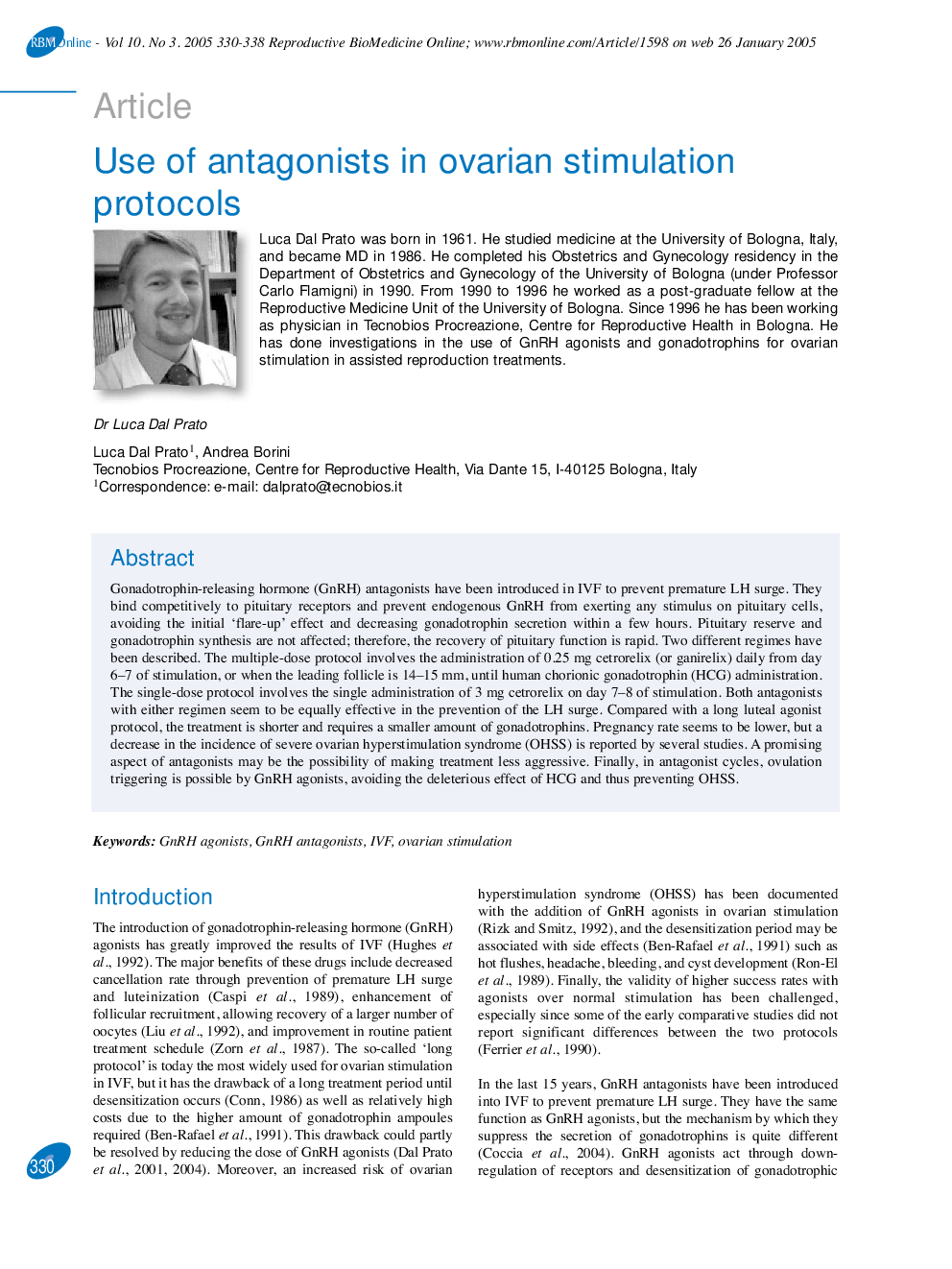| Article ID | Journal | Published Year | Pages | File Type |
|---|---|---|---|---|
| 9335369 | Reproductive BioMedicine Online | 2005 | 9 Pages |
Abstract
Gonadotrophin-releasing hormone (GnRH) antagonists have been introduced in IVF to prevent premature LH surge. They bind competitively to pituitary receptors and prevent endogenous GnRH from exerting any stimulus on pituitary cells, avoiding the initial 'flare-up' effect and decreasing gonadotrophin secretion within a few hours. Pituitary reserve and gonadotrophin synthesis are not affected; therefore, the recovery of pituitary function is rapid. Two different regimes have been described. The multiple-dose protocol involves the administration of 0.25 mg cetrorelix (or ganirelix) daily from day 6-7 of stimulation, or when the leading follicle is 14-15 mm, until human chorionic gonadotrophin (HCG) administration. The single-dose protocol involves the single administration of 3 mg cetrorelix on day 7-8 of stimulation. Both antagonists with either regimen seem to be equally effective in the prevention of the LH surge. Compared with a long luteal agonist protocol, the treatment is shorter and requires a smaller amount of gonadotrophins. Pregnancy rate seems to be lower, but a decrease in the incidence of severe ovarian hyperstimulation syndrome (OHSS) is reported by several studies. A promising aspect of antagonists may be the possibility of making treatment less aggressive. Finally, in antagonist cycles, ovulation triggering is possible by GnRH agonists, avoiding the deleterious effect of HCG and thus preventing OHSS.
Related Topics
Health Sciences
Medicine and Dentistry
Obstetrics, Gynecology and Women's Health
Authors
Luca Dal Prato, Andrea Borini,
